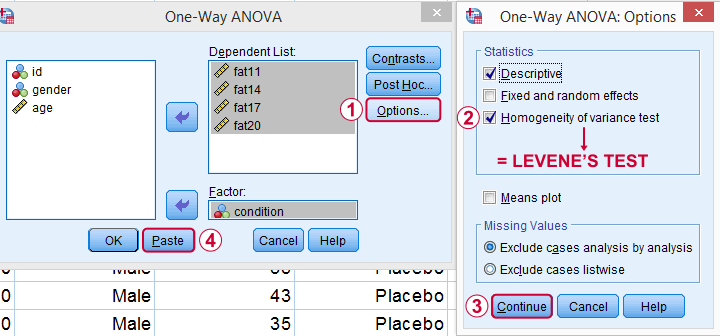

SAS and R is aggregated by R-bloggers, PROC-X, and statsblogs with our permission, and by at least 2 other aggregating services which have never contacted us. Test Statistic = 2.462, p-value = 0.08641Īn unrelated note about aggregators:We love aggregators! Aggregators collect blogs that have similar coverage for the convenience of readers, and for blog authors they offer a way to reach new audiences.

Modified robust Brown-Forsythe Levene-type test based on the absolute With(help, levene.test(cesd, as.factor(substance),location="median")) ( none not applied because the location is not set to median ) With(help, levene.test(cesd, as.factor(substance), location="mean"))Ĭlassical Levene's test based on the absolute deviations from the mean In R, the test can be found in the levene.test() function in the lawstat package. There’s some suggestion of a lack of homoscedasticity it might be wise to consider methods robust to violations of this assumption. Levene's Test for Homogeneity of CESD VarianceĪNOVA of Absolute Deviations from Group Meansīrown and Forsythe's Test for Homogeneity of CESD VarianceĪNOVA of Absolute Deviations from Group Medians The two requested tests are a version of Levene’s test that is produced in R, below, and the aforementioned Brown-Forsythe test. Means substance / hovtest=levene(type=abs) hovtest=bf In SAS, the tests are available as an option to the means statement in proc glm We illustrate using the HELP data set available here, modeling depressive symptoms (assessed via CESD) as a function of abused substance. This uses the medians within group, rather than the mean, and is recommended when normality may be suspect. The test is a function of the residuals and means within each group, though various modifications are used, including the Brown-Forsythe test. For ANOVA, this assumption can be tested via Levene’s test. The assumption of equal variances among the groups in analysis of variance is an expression of the assumption of homoscedasticity for linear models more generally.


 0 kommentar(er)
0 kommentar(er)
